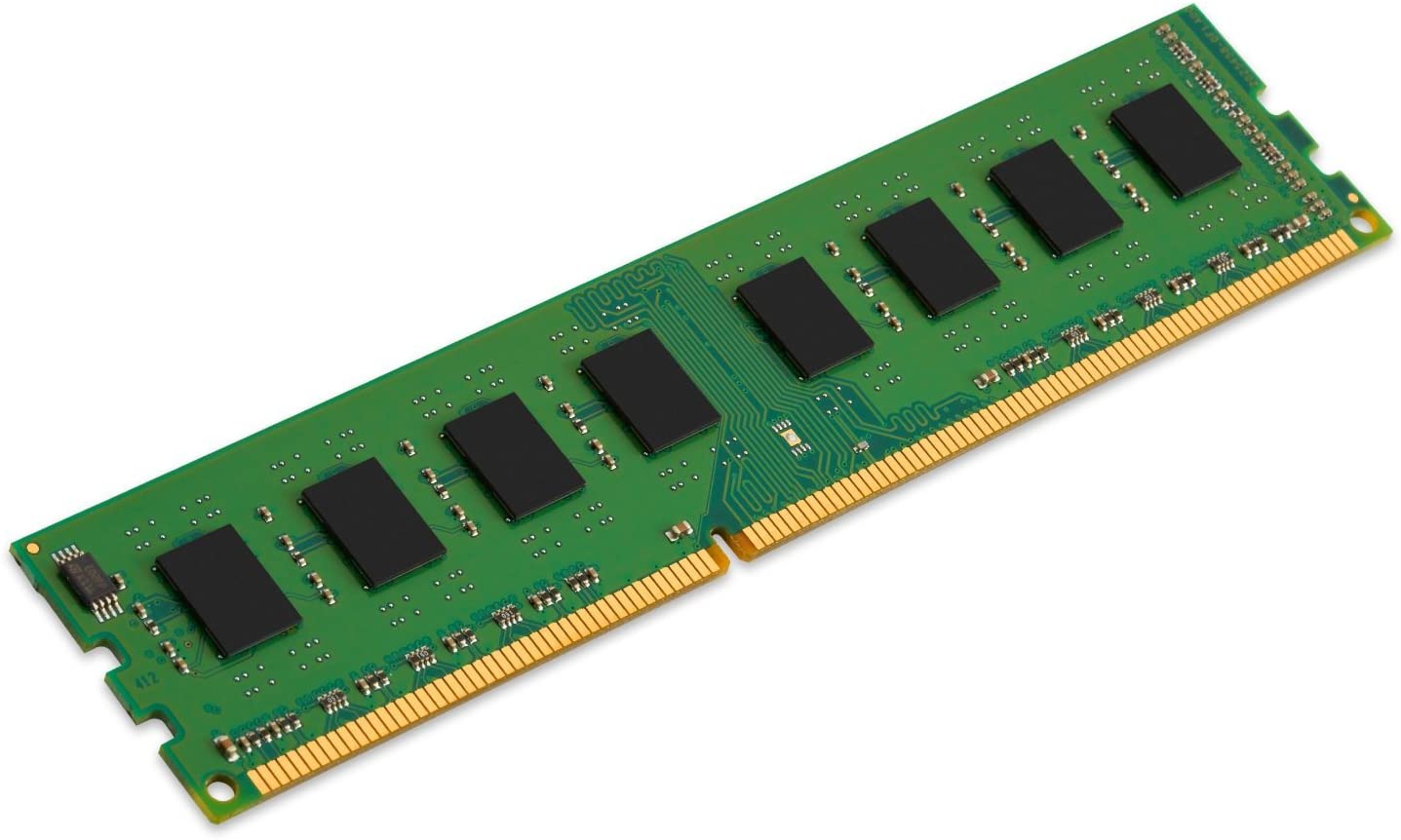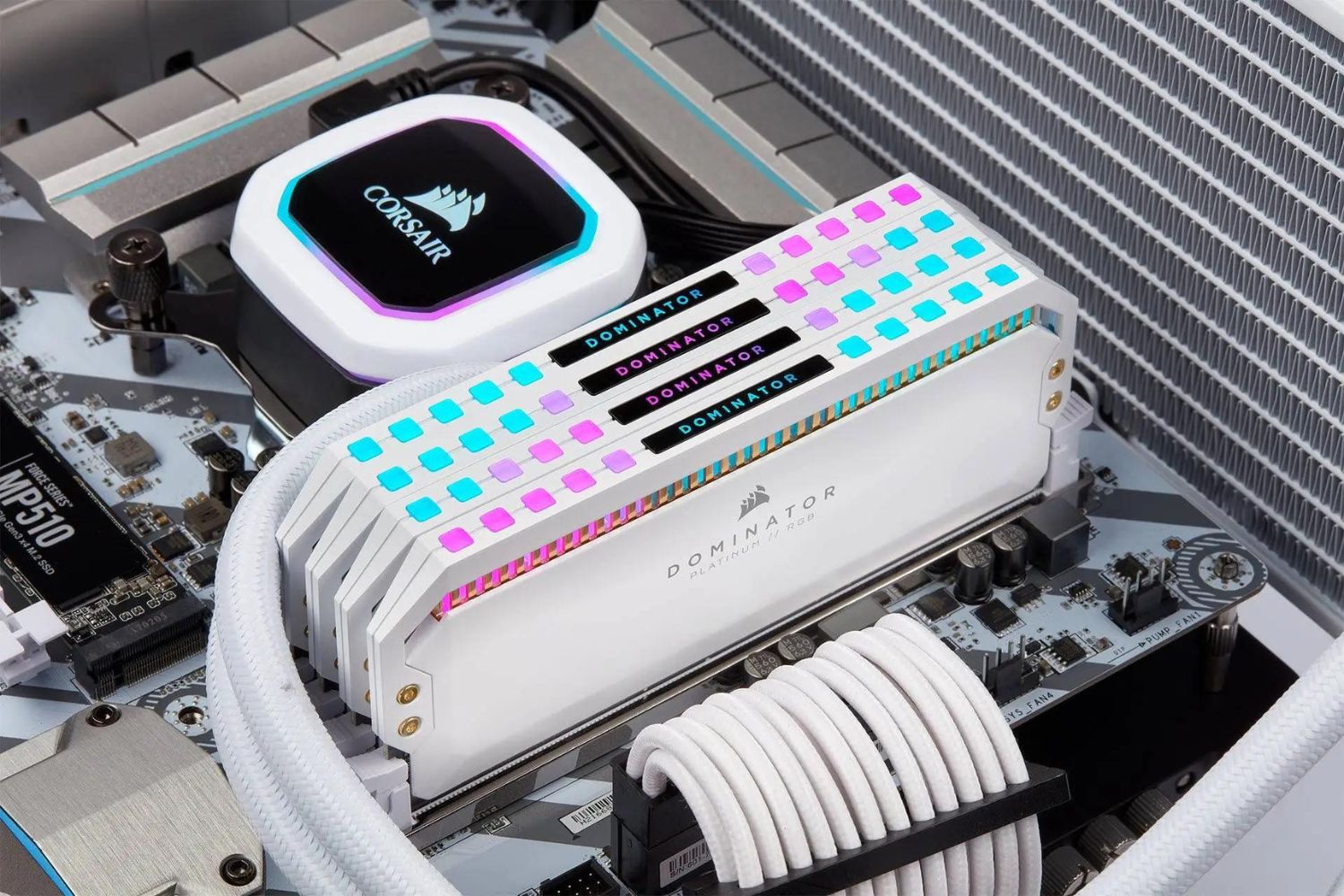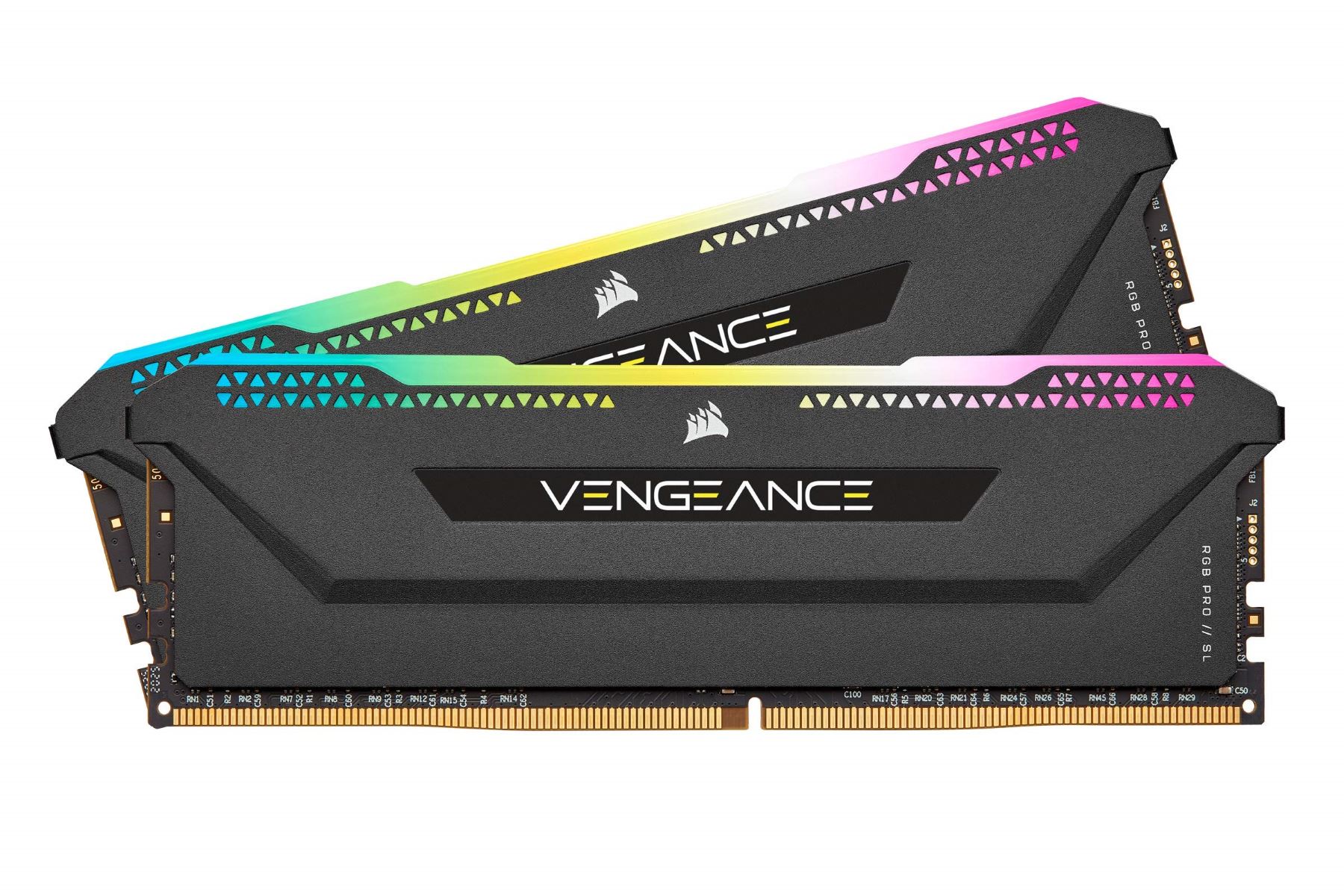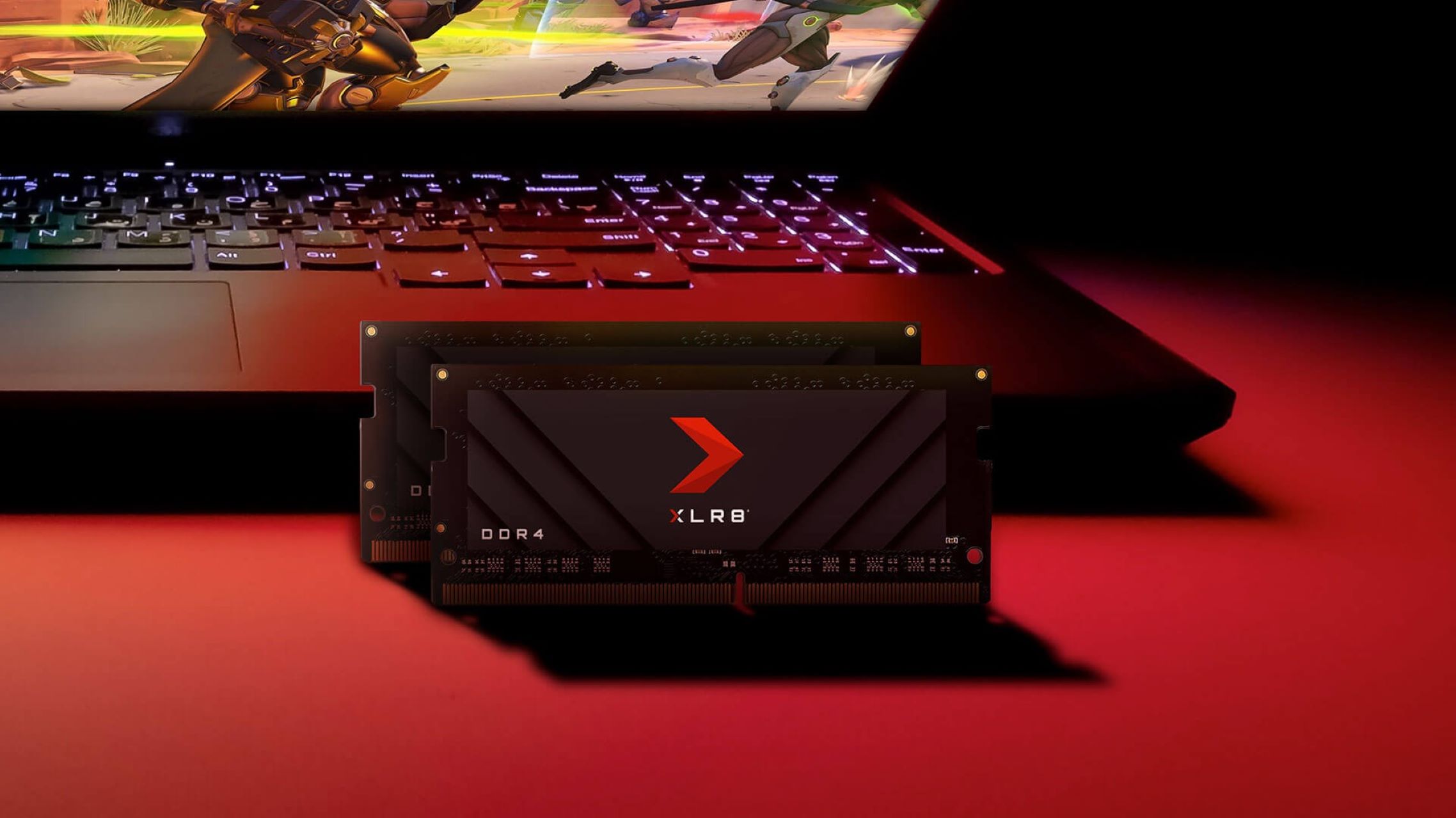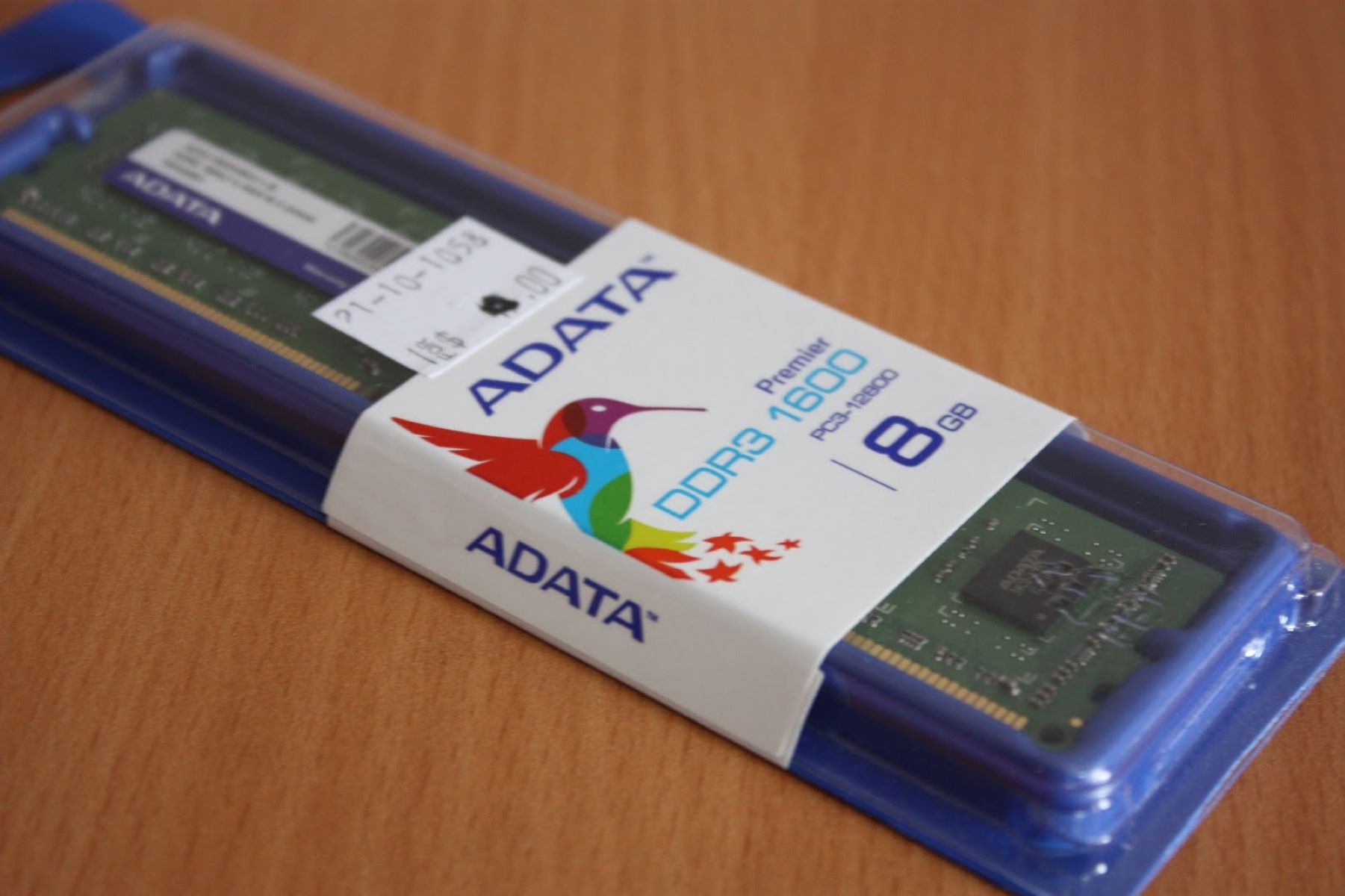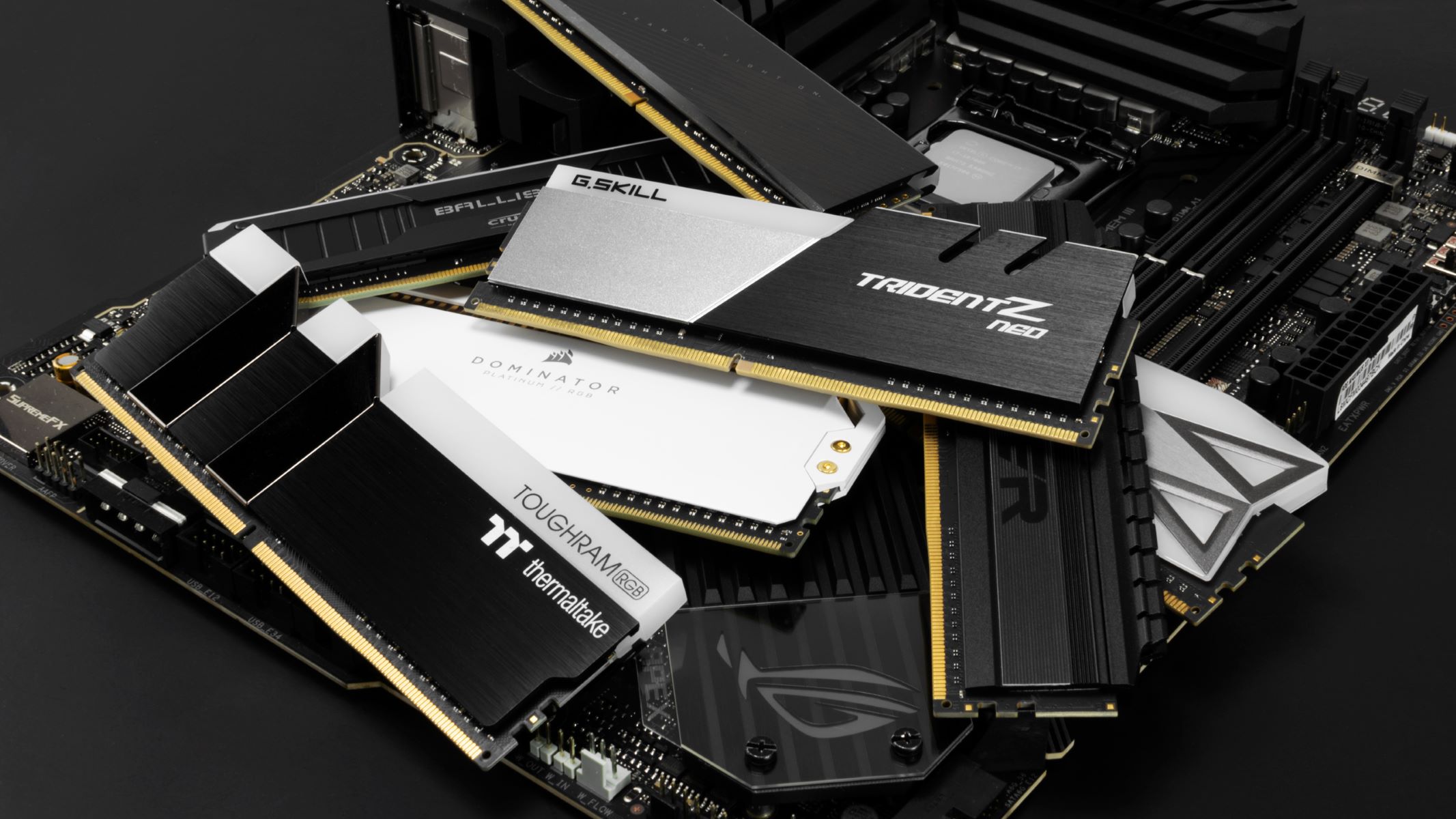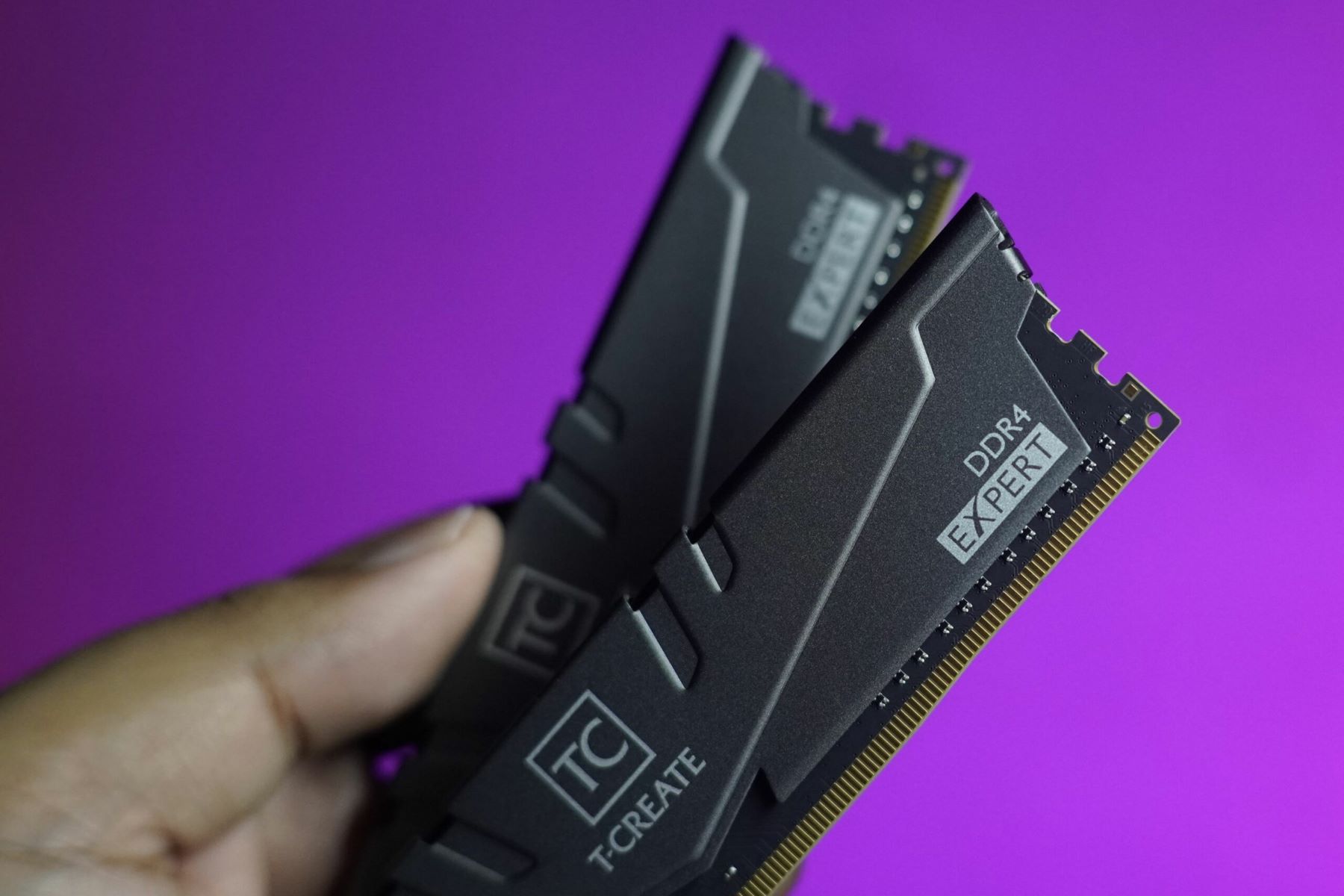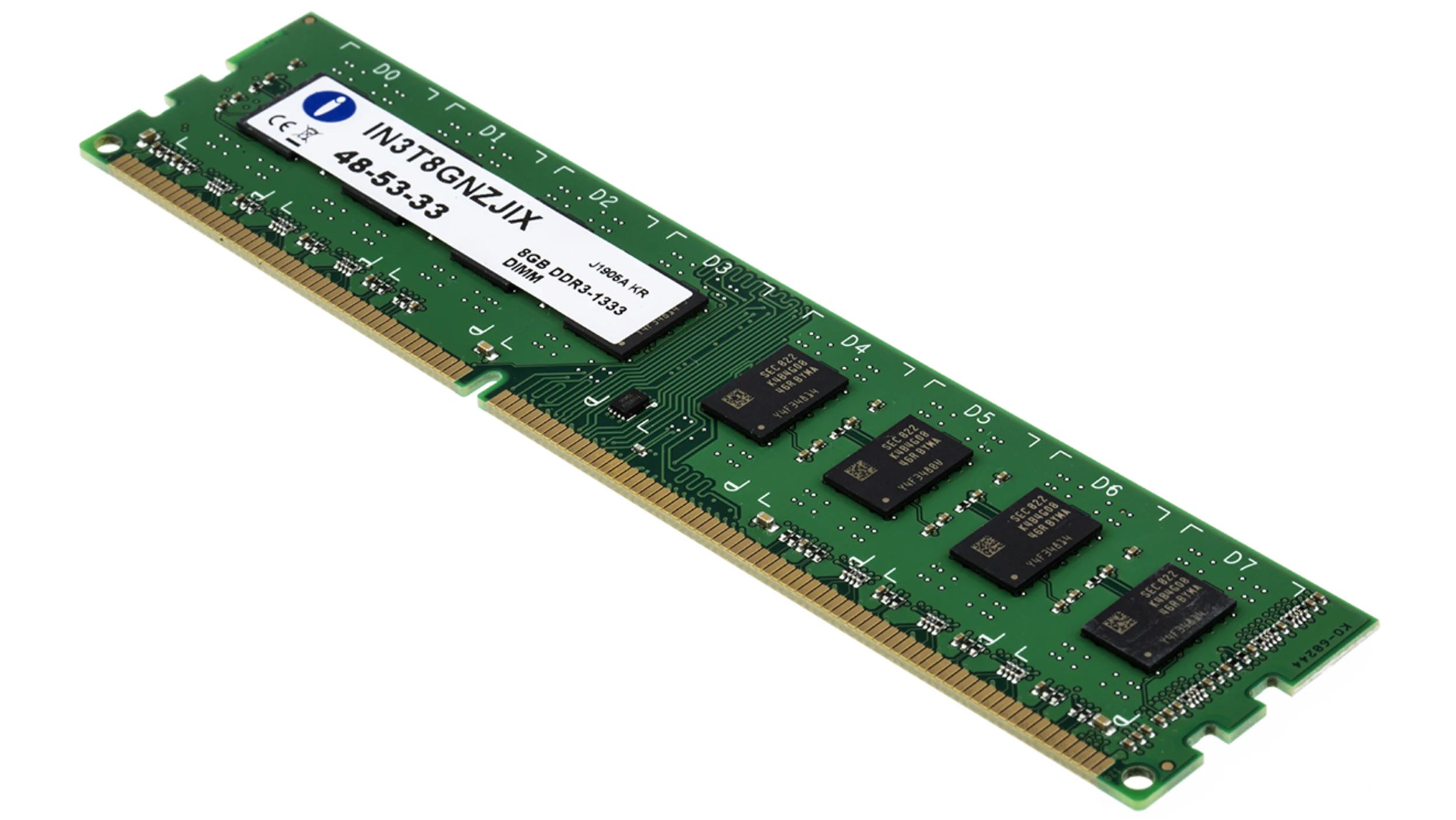Introduction
Welcome to the world of DDR RAM, the essential component that powers the performance of your computer or laptop. If you’re curious about the latest advancements in DDR RAM technology, you’ve come to the right place. In this article, we’ll dive into the world of DDR RAM, exploring its different types and shedding light on the much-anticipated DDR5 RAM.
DDR RAM, short for Double Data Rate Random Access Memory, is a type of computer memory that allows data to be stored and retrieved by the computer’s processor quickly. It plays a crucial role in determining the speed and efficiency of your system, making it a key consideration for both casual users and avid gamers.
Over the years, we have witnessed various iterations of DDR RAM, each offering improved performance and enhanced capabilities. From DDR to DDR2, DDR3, and now DDR4, the technology has evolved rapidly, setting new standards in data transfer rates and power efficiency.
Despite the impressive capabilities of DDR4 RAM, the industry is abuzz with anticipation for the arrival of DDR5 RAM. With promises of even greater performance and efficiency, DDR5 is poised to revolutionize the computing experience once again.
Join us as we delve into the differences between DDR4 and DDR5 RAM, explore the benefits of upgrading to DDR5, and learn how you can make the transition. Whether you’re a tech enthusiast or simply looking to optimize your computer’s performance, this article will equip you with the knowledge to make an informed decision.
What is DDR RAM?
DDR RAM, short for Double Data Rate Random Access Memory, is a type of computer memory that plays a crucial role in the functioning of your computer or laptop. It acts as a temporary storage for data that your computer needs to access quickly, such as program instructions and data files.
The “double data rate” in DDR RAM refers to its ability to transfer data on both the rising and falling edges of the clock cycle, effectively doubling the data transfer rate compared to earlier RAM technologies. This increased data transfer rate translates into improved performance and faster processing speeds.
DDR RAM operates based on synchronous dynamic random-access memory (SDRAM) technology, which means it synchronizes its operations with the computer’s clock speed. By synchronizing the memory access with the clock cycles, DDR RAM can maximize data transfer efficiency.
Different types of DDR RAM have been introduced over the years, with each iteration bringing advancements in data transfer rates, power consumption, and overall performance. The most common types of DDR RAM in use today are DDR2, DDR3, DDR4, and the latest addition, DDR5.
DDR RAM modules come in various capacities, typically ranging from a few gigabytes (GB) to multiple terabytes (TB). The capacity you choose depends on your specific needs, such as the type of applications you run and the multitasking requirements of your computer.
Overall, DDR RAM serves as a vital component in your computer’s performance. Its ability to store and retrieve data quickly ensures smooth operation, allowing you to run multiple applications simultaneously, play demanding video games, and perform resource-intensive tasks without experiencing noticeable slowdowns.
Different types of DDR RAM
DDR RAM has evolved over time, with each new generation introducing improvements in speed, efficiency, and capacity. Let’s take a closer look at the different types of DDR RAM:
- DDR2 RAM: DDR2 RAM was a significant advancement from its predecessor, DDR. With higher clock speeds and improved data transfer rates, DDR2 RAM offered better performance and efficiency. It was widely used in computers from the mid-2000s.
- DDR3 RAM: DDR3 RAM further improved data transfer rates and introduced lower operating voltages, leading to reduced power consumption. It brought faster speeds and increased capacities, making it a popular choice in computers and laptops from the late 2000s to early 2010s.
- DDR4 RAM: DDR4 RAM is the current standard for most modern computers. It offers even higher data transfer rates, increased capacity options, and improved power efficiency compared to DDR3 RAM. DDR4 RAM has become the go-to choice for gamers, content creators, and professionals who require high-performance systems.
- DDR5 RAM: The latest addition to the DDR lineup is DDR5 RAM. This next-generation memory technology is set to bring significant advancements in performance and efficiency. DDR5 RAM boasts faster data transfer rates, larger capacities, and lower voltage requirements, making it ideal for future-proofing your system.
It’s important to note that each new generation of DDR RAM is not backward compatible with older technologies. For example, DDR4 RAM cannot be used in a system designed for DDR3 RAM. When upgrading or building a new computer, it’s crucial to ensure compatibility between the RAM type and the motherboard.
Understanding the different types of DDR RAM allows you to make an informed choice when upgrading or purchasing a new computer. Consider your specific needs, budget, and compatibility requirements to select the DDR RAM that best suits your system’s requirements.
DDR4
DDR4 RAM, the fourth generation of DDR RAM, has become the industry standard for modern computers. It brought several significant improvements over its predecessor, DDR3. Let’s explore some key features and benefits of DDR4 RAM:
Higher Data Transfer Rates: DDR4 RAM offers faster data transfer rates compared to DDR3, thanks to its increased clock speeds. This allows for quicker access to data stored in memory, resulting in improved overall system performance.
Increased Capacity Options: DDR4 RAM provides larger capacity options, allowing you to have more memory in your system. This is particularly beneficial for users who work with resource-intensive applications, such as video editing, 3D rendering, and virtualization.
Better Power Efficiency: DDR4 RAM operates at lower voltages compared to DDR3, resulting in reduced power consumption. This not only contributes to a more environmentally friendly system but also helps keep temperatures lower, which can positively impact system stability and longevity.
Improved Error Correction: DDR4 RAM introduces advanced error correction code (ECC) capabilities, ensuring data integrity and reliability. ECC helps detect and correct single-bit errors, reducing the risk of data corruption and system instability.
Enhanced Performance for Gaming: DDR4 RAM delivers a noticeable performance boost in gaming. It allows for faster loading times, smoother gameplay, and improved frame rates, enhancing the gaming experience for both casual gamers and enthusiasts alike.
Compatibility: DDR4 RAM is not backward compatible with older generations of DDR RAM. To utilize DDR4 RAM, you will need a motherboard that supports DDR4 technology. Always ensure compatibility between your motherboard and RAM before making a purchase.
DDR4 RAM has become the go-to choice for most users due to its superior performance, increased capacity options, power efficiency, and compatibility with modern systems. Whether you’re a gamer, content creator, or professional user, upgrading to DDR4 RAM can greatly enhance your computing experience.
DDR5
DDR5 RAM, the latest iteration in DDR technology, is generating excitement in the world of computer memory. Although not yet widely available, DDR5 RAM is poised to bring significant advancements over its predecessor, DDR4. Let’s explore some key features and benefits of DDR5 RAM:
Increased Data Transfer Rates: DDR5 RAM offers significantly higher data transfer rates compared to DDR4. With speeds reaching up to 6400 MT/s (megatransfers per second) and beyond, DDR5 RAM ensures faster data access, resulting in improved overall system responsiveness.
Larger Capacities: DDR5 RAM supports larger memory capacities, allowing for even more data to be stored and accessed simultaneously. This is particularly beneficial for tasks that require working with large datasets, such as video editing, complex simulations, and data analysis.
Improved Power Efficiency: DDR5 RAM introduces advanced power management features, enabling better energy efficiency compared to DDR4. This means that while delivering higher performance, DDR5 RAM will consume less power, contributing to lower energy costs and reduced environmental impact.
Innovative Error Correction: DDR5 RAM incorporates cutting-edge error correction mechanisms, such as the enhanced cyclic redundancy check (CRC). These features help ensure data integrity and reliability by detecting and correcting errors more efficiently, resulting in improved system stability.
Advanced Reliability and Scalability: DDR5 RAM includes features that enhance reliability and scalability, making it suitable for high-demanding applications and server environments. It offers improved memory channel efficiency, allowing for more memory modules to be used simultaneously, thus maximizing performance potential.
Backward Compatibility: While DDR5 RAM is a new generation of memory technology, it is backward compatible with DDR4. This means that DDR5 RAM modules can be physically inserted into DDR4 slots. However, to take advantage of DDR5’s advanced features, you will need a compatible motherboard with DDR5 support.
DDR5 RAM represents a significant leap forward in memory technology, with faster speeds, larger capacities, improved power efficiency, and advanced error correction mechanisms. As DDR5 becomes more readily available, it will revolutionize the performance of high-end gaming PCs, workstations, and enterprise-grade servers.
Comparison between DDR4 and DDR5
DDR4 and DDR5 RAM are two generations of memory technology that have distinct differences and improvements. Let’s compare the key features and advantages of DDR4 and DDR5:
Data Transfer Rates: DDR5 RAM offers significantly higher data transfer rates compared to DDR4. While DDR4 typically operates at speeds up to 3200 MT/s, DDR5 can reach speeds of 6400 MT/s and beyond. This translates to faster data access, improved system responsiveness, and smoother multitasking capabilities.
Capacity: DDR5 RAM supports larger memory capacities compared to DDR4. While DDR4 modules can reach capacities of up to 128GB per module, DDR5 has the potential to offer even higher capacities, potentially reaching 256GB or more per module. This increased capacity is beneficial for memory-intensive applications and data-heavy tasks.
Power Efficiency: DDR5 RAM introduces improved power management features, allowing for better energy efficiency compared to DDR4. DDR5 operates at lower voltages, reducing power consumption and heat generation. This not only results in energy savings but also contributes to overall system stability and longevity.
Error Correction: DDR5 RAM incorporates advanced error correction capabilities, such as enhanced cyclic redundancy check (CRC) algorithms, which improve data integrity and reliability. These features help identify and correct errors more efficiently, reducing the risk of data corruption and system instability.
Motherboard Compatibility: DDR5 RAM requires a motherboard that specifically supports DDR5 technology. While physical backward compatibility exists, meaning DDR5 RAM modules can physically fit into DDR4 slots, to fully utilize DDR5’s advanced features, a DDR5-compatible motherboard is necessary.
Pricing: As with any new technology, DDR5 initially comes at a premium price due to its advanced features and increased performance capabilities. DDR4 RAM, being more established and widely available, tends to be more affordable. However, as DDR5 becomes more mainstream, prices are expected to decrease.
It’s important to note that DDR4 RAM still offers excellent performance and is suitable for most computing needs. DDR5 will primarily benefit those who require the latest cutting-edge technology or engage in resource-intensive tasks, such as gaming, content creation, and professional applications.
When considering a DDR4 or DDR5 upgrade, it is essential to assess your specific needs, budget, and compatibility requirements. If you’re building a new system or looking to upgrade, consider future-proofing your setup by opting for DDR5 RAM to take advantage of its increased performance and capabilities.
Benefits of DDR5 RAM
DDR5 RAM brings a host of benefits and advancements over its predecessors, making it an enticing option for those seeking cutting-edge memory technology. Let’s explore some of the key benefits of DDR5:
1. Faster Speeds: DDR5 RAM offers significantly higher data transfer rates compared to DDR4. With speeds reaching up to 6400 MT/s and beyond, DDR5 provides faster access to data, resulting in improved overall system responsiveness and faster application loading times.
2. Increased Capacity: DDR5 RAM supports larger memory capacities, allowing for more data to be stored and accessed simultaneously. This is particularly beneficial for memory-intensive applications, such as video editing, virtualization, and data analysis, where having ample memory can significantly enhance performance.
3. Improved Power Efficiency: DDR5 RAM operates at lower voltages compared to DDR4, resulting in reduced power consumption. This contributes to lower energy costs and helps keep the system temperature in check, promoting system stability and longevity.
4. Advanced Error Correction: DDR5 RAM introduces enhanced error correction capabilities, such as improved cyclic redundancy check (CRC) algorithms. These features help detect and correct errors more efficiently, ensuring data integrity and reducing the risk of system crashes or data corruption.
5. Scalability: DDR5 RAM offers improved memory channel efficiency, making it suitable for high-demanding applications and server environments. It allows for more memory modules to be used simultaneously, enabling greater scalability and maximizing the system’s performance potential.
6. Future-proofing: By investing in DDR5 RAM, you are future-proofing your system for upcoming advancements in memory technology. As more applications and software demand higher memory performance, having DDR5 RAM will ensure that your system can keep up with evolving requirements.
7. Gaming Performance: DDR5 RAM delivers a noticeable performance boost in gaming. With faster data transfer rates and improved overall system responsiveness, DDR5 RAM can provide smoother gameplay, faster loading times, and improved frame rates for an immersive gaming experience.
While DDR5 RAM offers significant benefits, it’s important to consider compatibility with your motherboard and other system components. Not all systems are compatible with DDR5 technology, so it’s crucial to check motherboard specifications and ensure DDR5 support before making a purchase.
As DDR5 RAM becomes more accessible and cost-effective, upgrading to this next-generation memory technology can significantly enhance your system’s performance, improve multitasking capabilities, and future-proof your computer for years to come.
How to Upgrade to DDR5 RAM
Upgrading to DDR5 RAM requires careful consideration and compatible hardware to ensure a smooth transition. Here are the steps to follow when upgrading to DDR5 RAM:
1. Check Motherboard Compatibility: The first step is to verify whether your motherboard supports DDR5 RAM. Not all motherboards are compatible with DDR5 technology, so check the manufacturer’s specifications or consult the motherboard manual to ensure compatibility.
2. Determine Required Capacity: Assess your system’s memory requirements and determine the amount of RAM you need. Consider the types of applications you use, multitasking requirements, and your budget to choose an appropriate DDR5 RAM capacity.
3. Purchase DDR5 RAM Modules: Once you know your system’s requirements, purchase DDR5 RAM modules from a reputable manufacturer. Ensure that the modules match your desired capacity and meet the specifications provided by your motherboard manufacturer.
4. Power Off and Unplug: Before installing the new DDR5 RAM, power off your computer and disconnect it from the power source. This ensures the safety of both you and your system during the installation process.
5. Remove Existing RAM Modules: Open your computer’s case, locate the existing DDR RAM modules, and carefully remove them one by one. Gently release the retaining clips on the sides of the RAM slots and slide out the modules.
6. Install DDR5 RAM: Take the DDR5 RAM modules and align them with the slots on the motherboard. Insert the modules firmly but gently into the slots until the retaining clips lock into place. Double-check that the modules are securely seated in the slots.
7. Power On and Test: Once the DDR5 RAM is installed, close the computer case, reconnect the power source, and power on your system. The system should automatically recognize the new RAM modules. To verify proper installation, check the system BIOS or use diagnostic software to ensure that the memory is detected and functioning correctly.
8. Update BIOS and Drivers (if necessary): In some cases, a motherboard may require a BIOS update to fully support DDR5 RAM. Check the motherboard manufacturer’s website for any available updates and follow their instructions to update the BIOS. Additionally, ensure that all necessary drivers are up to date for optimal performance.
It’s important to note that upgrading to DDR5 RAM may also require other hardware upgrades, such as a compatible CPU and updated firmware. Consult the manufacturer’s documentation or seek professional assistance if you are unsure about the compatibility of your system components.
By following these steps and ensuring compatibility, you can successfully upgrade to DDR5 RAM and enjoy the benefits of enhanced performance, increased capacity, and improved efficiency in your computer system.
Conclusion
DDR RAM technology has come a long way, with each new generation bringing advancements in speed, capacity, and efficiency. From DDR2 to DDR3, DDR4, and now DDR5, these memory modules play a vital role in maximizing your computer’s performance and capabilities.
In this article, we explored the world of DDR RAM, delving into its different types and highlighting the exciting features of DDR5 RAM. We compared DDR5 with its predecessor, DDR4, and discussed the benefits and advantages of upgrading to DDR5.
DDR5 RAM offers faster data transfer rates, larger capacities, improved power efficiency, and advanced error correction capabilities. These features make DDR5 an appealing option for gamers, content creators, professionals, and anyone seeking high-performance computing.
When considering an upgrade to DDR5 RAM, it is essential to verify the compatibility of your motherboard and other system components. Ensure that your motherboard supports DDR5 technology and consider factors such as capacity requirements, budget, and future-proofing.
Whether you choose to stick with DDR4 or embrace the advancements of DDR5, optimizing your computer’s memory will undoubtedly contribute to smoother multitasking, improved system responsiveness, and a more enjoyable computing experience.
Keep an eye on the market as DDR5 RAM becomes more readily available. As prices adjust and compatibility broadens, upgrading to DDR5 RAM may become an accessible and attractive option for more users.
Remember to always follow proper installation procedures when upgrading RAM or any other computer component. If you are unsure about compatibility or installation processes, consult the manufacturer’s documentation or seek the assistance of a knowledgeable professional.
Upgrade your computer’s memory technology and unlock the true potential of your system with DDR RAM. Stay informed about the latest advancements and make an informed decision based on your computing needs. Embrace the power and performance that DDR RAM has to offer, and enjoy a faster, more efficient computing experience.







